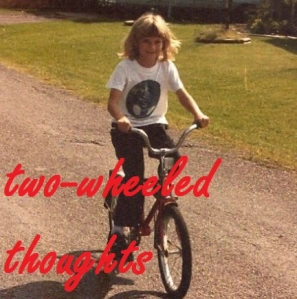Humans haunt more houses than ghosts do. Men and women assign value to brick and mortar, link their identities to mortgages paid on time. On frigid winter nights, young mothers walk their fussy babies from room to room, learning where the rooms catch drafts and where the floorboards creak. In the warm damp of summer, fathers sit on porches, sometimes worried and often tired but comforted by the fact that a roof is up there providing shelter. Children smudge up walls with dirty handprints, find nooks to hide their particular treasure, or hide themselves if need be. We live and die in houses, dream of getting back to houses, take great care in considering who will inherit the houses when we’re gone.
 Family, home, and sense of place. Pathos and humor. What’s not to love? This is a Great American Novel, telling the story of one prodigious family over generations, and in it the story of a city and more: the Turners’ Detroit is the story of the Great Migration, of racism and striving. Francis Turner came up from Alabama to Detroit in 1944, to be later joined by his wife Viola and first son, Charles or Cha-Cha. From there, from one rental house to another, the family grew, purchasing the house on Yarrow Street in 1951, where they would raise thirteen children, whose ages span 23 years. Readers meet these character briefly in 1958 and then spend much of the book’s space in 2008, as a widowed Viola weakens in Cha-Cha’s home and the old house on Yarrow falls into decay (and, if you remember 2008, there will be financial repercussions). The timeline jumps around: The Turner House is most concerned with 2008 and the final disposition of the title house (and its matriarch), but to tell that story, we have to flash back. Not all thirteen of the siblings get equal time, of course; the eldest, Cha-Cha, and the youngest, Lelah, play large roles, as do patriarch and matriarch, and a few others along the way, including partners.
Family, home, and sense of place. Pathos and humor. What’s not to love? This is a Great American Novel, telling the story of one prodigious family over generations, and in it the story of a city and more: the Turners’ Detroit is the story of the Great Migration, of racism and striving. Francis Turner came up from Alabama to Detroit in 1944, to be later joined by his wife Viola and first son, Charles or Cha-Cha. From there, from one rental house to another, the family grew, purchasing the house on Yarrow Street in 1951, where they would raise thirteen children, whose ages span 23 years. Readers meet these character briefly in 1958 and then spend much of the book’s space in 2008, as a widowed Viola weakens in Cha-Cha’s home and the old house on Yarrow falls into decay (and, if you remember 2008, there will be financial repercussions). The timeline jumps around: The Turner House is most concerned with 2008 and the final disposition of the title house (and its matriarch), but to tell that story, we have to flash back. Not all thirteen of the siblings get equal time, of course; the eldest, Cha-Cha, and the youngest, Lelah, play large roles, as do patriarch and matriarch, and a few others along the way, including partners.
There is a bit of a mystery at this story’s heart, too: Cha-Cha saw a haint in the Turner house when he was just a boy, and in his 60s he sees it again, while driving an 18-wheeler for work, which ends his career. His efforts to resolve this haint – its reality or unreality, its meaning – drives much of the book’s plot, serving as the main conflict in the 2008 timeline, although readers gradually become aware of how tenuous the family’s very existence was in the 1944 timeline as well. And Lelah is fighting demons of her own – as are all thirteen siblings, presumably, as are all of us. It’s an expansive story like that.
One man’s haunting is another man’s hallowed guest.
There is humor as well as pain, and many truths about families and homes, especially large families. One sideplot, which is both heartwrenching and funny, involves a minor character whose curiosity about big families causes her to make some spectacular missteps. As an outsider to large families myself, I sympathize, and I enjoyed this glimpse into a big, warm, loving, dysfunctional, unwieldy example.
He felt like a hostage in his own house. He saw now that these parties were larger than him and Tina, and even Viola. That his family could go on party prepping in Cha-Cha’s house when his home life was an obvious wreck indicated of a lack of respect. This was what happened when an open-door policy–something Cha and Tina had prided themselves on–ran amok. When mi casa es su casa was taken literally. His house had become an extension of the Brotherly Banquet Hall of their youths, except his siblings slept here too, and paid no security deposit for damage. In exchange, Turners thought their presence was expression of love enough; that they’d booked flights and crossed state lines to invade Cha-Cha’s space was supposed to be some sort of gift to him. It felt more like an ambush.
You know I have a special weakness for literature that tackles our relationships to places. Detroit is not a city I know well, but this version certainly felt fully formed to me; I didn’t look up street names but these are real places as far as I’m concerned, and that’s good enough. The importance of home, of connection to place and (sometimes) to the walls of one place in particular is very much a part of my worldview.
This book is about families and relationships, about connections to the past, about mysticism, about race and housing discrimination and Detroit and the Great Migration and the United States, about the significance of place and home. It is beautifully written and entirely absorbing; none of these characters is without flaws, but the narrative oozes with empathy through it all. It’s a masterpiece.
Filed under: book reviews | Tagged: family, misc fiction, sense of place |







[…] The Turner House, Angela Flournoy […]